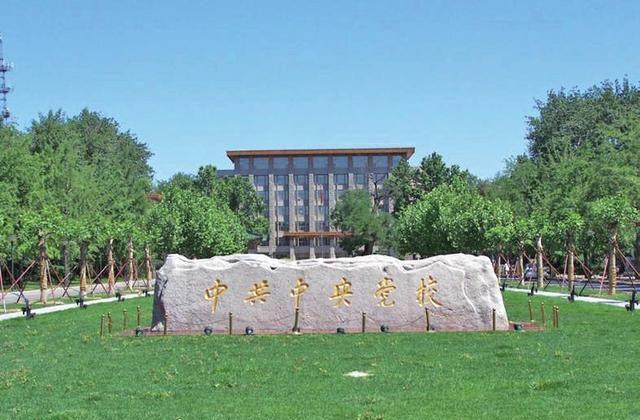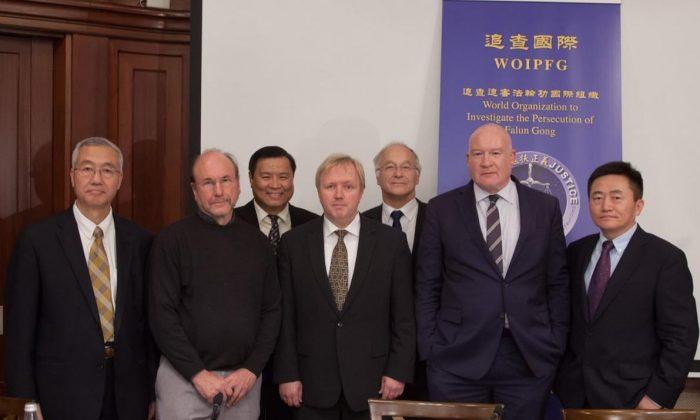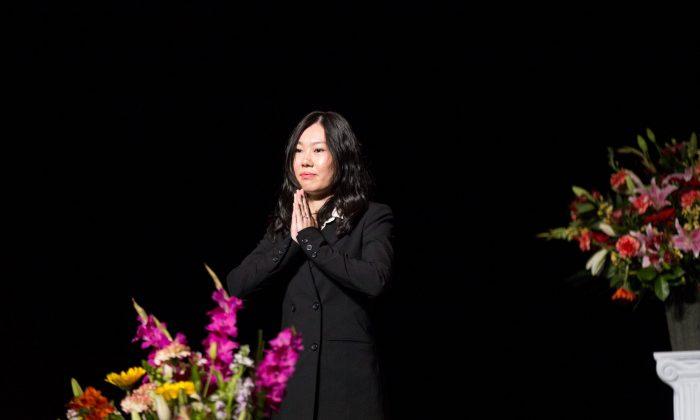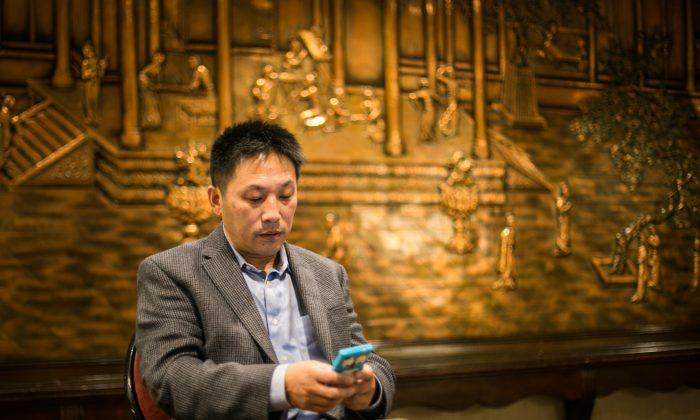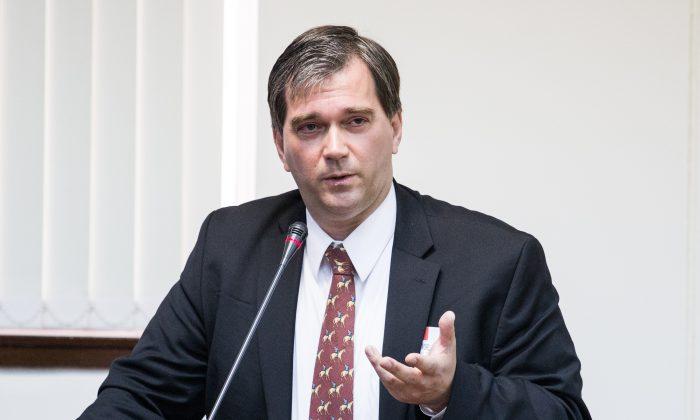A stone etched with the Chinese characters for “Chinese Communist Party Central Party School,” reportedly based on the calligraphy of former General Secretary Jiang Zemin, was unceremoniously removed from the school on Aug. 21, leaving a conspicuous patch of dirt, according to Chinese news reports.
Rumors that the removal had taken place emerged on Aug. 21, but were not confirmed until major Chinese Internet portals ran photo slideshows on Saturday afternoon, Aug. 22.
The large stone stele sat on a paved platform with eight floodlights to illuminate it at night. The entire edifice was bulldozed, bright green grass replaced with torn up dirt, paving stones broken as the earthmoving equipment drove away. The stone appeared to be near the south gate of the school in the Haidian District of Beijing. The Central Party School is the Communist Party’s main center for professional training and ideological indoctrination of its cadre corps.
According to available reports, and the widespread belief of Chinese Internet users and many online news outlets, the characters were an “inscription” (“tici,” in Mandarin Chinese) by Jiang Zemin, the leader of the Chinese Communist Party from 1989 until 2002, and Xi Jinping’s main political rival since he assumed power in 2012.
Tearing out his characters—Jiang was fond of leaving inscriptions and writing poems as he traveled with his entourage around the country—seemed a gesture pregnant with meaning. In the reading of observers of the episode: a slap in the face to Jiang Zemin, and an omen of his impending political demise.
The news also follows Epoch Times’ recent report that, according to a well-placed source in Beijing, Xi put Jiang and his two sons under a form of temporary internal control, limiting their movements; his chief henchman, Zeng Qinghong, was placed under house arrest.

Since coming into power in November 2012, Xi has led a still ongoing anti-corruption campaign that has investigated tens of thousands of Party members. Much of the focus of Xi’s purge has been aimed at the network of confidants and cronies of Jiang and his lieutenants. A recent, widely circulated editorial in People’s Daily, the mouthpiece of the Party, said that officials who leave office should not attempt to interfere with the policies of their successors. It was widely read as the first open volley against Jiang.
Reaction
Chinese news reports carried no elaboration on the removal of the stone, nor did they explain why the news was being reported, or replicated so widely. Many of the reports were quickly deleted from popular web portals they were published on.
That the removal was political, and not a mere spot of summer redecorating at the Party School, was a sentiment widely shared on the Internet.
One of the first recorded appearances on Weibo said: “I heard from a friend who just walked past the south gate of the Party school that the toad’s ‘Chinese Communist Party Central Party School’ inscription has been pulled out by the roots. What fun. How interesting. Too delightful.” (The epithet “toad” is often applied to Jiang Zemin online, in reference to his appearance, which often includes trousers hiked up past his corpulent waist, and large spectacles.)
That post was retweeted but deleted soon afterwards, according to WeiboScope, a tool that detects recently deleted posts on the Twitter-like social media platform, developed by Hong Kong University’s Journalism and Media Studies Centre.
“The final darkness of 2015: dog biting dog. We’re just observers, what’s there to say?” wrote one user.
“An inscription by him at a factory in our city center was pulled down recently,” wrote another.
Internet censorship authorities appeared to have made a particular point to ensure that the public’s views on the matter were not heard: comment sections that followed photo galleries online were shut down, the comments made invisible or deleted, and posts to the social media platform Sina Weibo also censored.
Five pages of comments under Sina’s report about the news on Weibo were purged, vanishing even in the course of being archived.
Around 85 comments corresponding to a slideshow on NetEase, a popular web portal, were inaccessible less than two hours after the slideshow was published. None of them were saved.
Comments made on the Sohu web portal were soon shut down too, though Epoch Times archived a portion of them before they also disappeared. Whether it was the same chain of command inside the Party that ordered the stele removed, which also ordered selective censorship of reports and comments, is unclear.

“Why don’t they explain the reason for the ’removal'? There are games behind this!” one user said.
“Why, when publishing this news, they ‘want to say something but stop’? What is the trick here?” asked another, using a Chinese idiom.
“If you do it, do it—why not dare to say the reason?” said one. Another simply wrote “Old auntie frog!” Another: “When you work out who wrote it, the situation is basically clear.”
That the characters on the stone were indeed Jiang’s is difficult to verify, though this was a widespread belief. Such strict and surgical censorship—reporting the news, but deleting all comments—typically only takes place when reports involve sensitive Party political affairs. The Central Party School did not appear to have a press office, and an email enquiring about the matter was not immediately returned. Jiang is well known for leaving his inscriptions and poems around China during his travels, however—at hospitals, middle-schools, airports, bridges, and elsewhere.
According to a report on the Party School in Shanghai by Émilie Tran, an academic at the University of Saint Joseph in Macau, in September 2001 when trainees returned to school they found it decorated with “giant red banners” with exhortations to study and implement Jiang’s theoretical contribution to the Chinese communist canon, the “Three Represents.”
Jiang’s most powerful and well-known ally, often called his hatchet man, Zeng Qinghong, was head of the Central Party School from 2002-2007.
In a report for the Wall Street Journal in 2002, Charles Hutzler, later the bureau chief for AP in China, compared the styles of Jiang Zemin with his immediate successor Hu Jintao. He wrote: “[Hu] doesn’t write the dedications or inscriptions for public monuments as President Jiang and others in the leadership like to do. It’s Mr. Jiang’s calligraphy—not Mr. Hu’s—that graces a stone marker in front of the party school. ”
